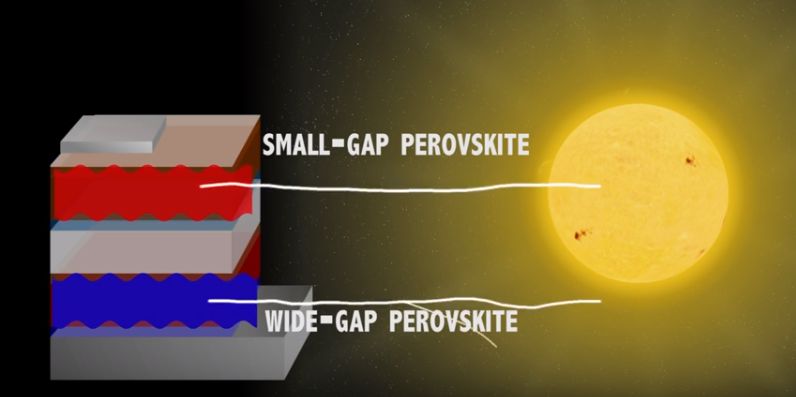By Gary Elinoff, contributing writer
Rooftop solar is a great way to go green and to eliminate, or at least greatly reduce, your monthly electric bill. Providers such as Tesla are now offering turnkey systems revolving around silicon-based solar cells. But it’s not a solution that can work for all homeowners because of the high cost involved. Additionally, the University of Cambridge’s Sam Stranks points out that a large percentage of the roofs capping homes in America simply will not be able to safely support the sheer weight of the devices. But Stranks and his research team are working on a solution — much lighter, cheaper solar “tarps” based on perovskite crystals.
Thin-film perovskites
As described in Cleantechnica, the term perovskite, for our purposes, refers to a type of artificially synthesized crystalline material that mimics the characteristics of the naturally occurring mineral. The reason for the weight advantage offered by perovskite-based solar cells is that they can be configured as a thin film that can be “painted” onto substrates that can be both flexible and lightweight. And that’s not all. Perovskites can absorb energy from a wider spectrum of the sun’s light-wave energy with the potential of harvesting more energy from a given amount of square footage. They also have the additional advantage of being far less expensive than classical silicon-based solar cells.
As Stranks reported to Inverse, perovskites have been around for some time, but progress has been hampered by imperfections in the crystal structure. Now, by adjusting light and moisture levels during manufacturing, perovskite cells that have performed well for a period of months have been demonstrated. However, the ultimate benchmark is 30 years of solid performance to match Tesla’s guarantee.
Two solar cells in one
Michael McGehee of Stanford University explains that perovskite thin films can now be constructed with two layers: a blue layer to absorb energy from most of the visible spectrum and a red layer to absorb red and infrared solar radiation. The combined output yields more energy than either can alone, allowing for a greater energy harvest overall.

Two solar cells in one. Image source: Michael McGehee.
Perovskite silicon partnerships
As noted in the Cleantechnica article, a hybrid device achieving 23.9% has already been demonstrated at Belgium’s IMEC research hub. This has been achieved by stacking a perovskite solar cell on top of a standard silicon unit and taking advantage of the fact that perovskites, as described earlier, can absorb a wider range of the sun’s spectrum than silicon can. While this combination will obviously be more expensive and heavier, IMEC predicts that efficiencies of 30% and more will eventually be attainable via this method.
Advertisement
Learn more about Electronic Products Magazine





